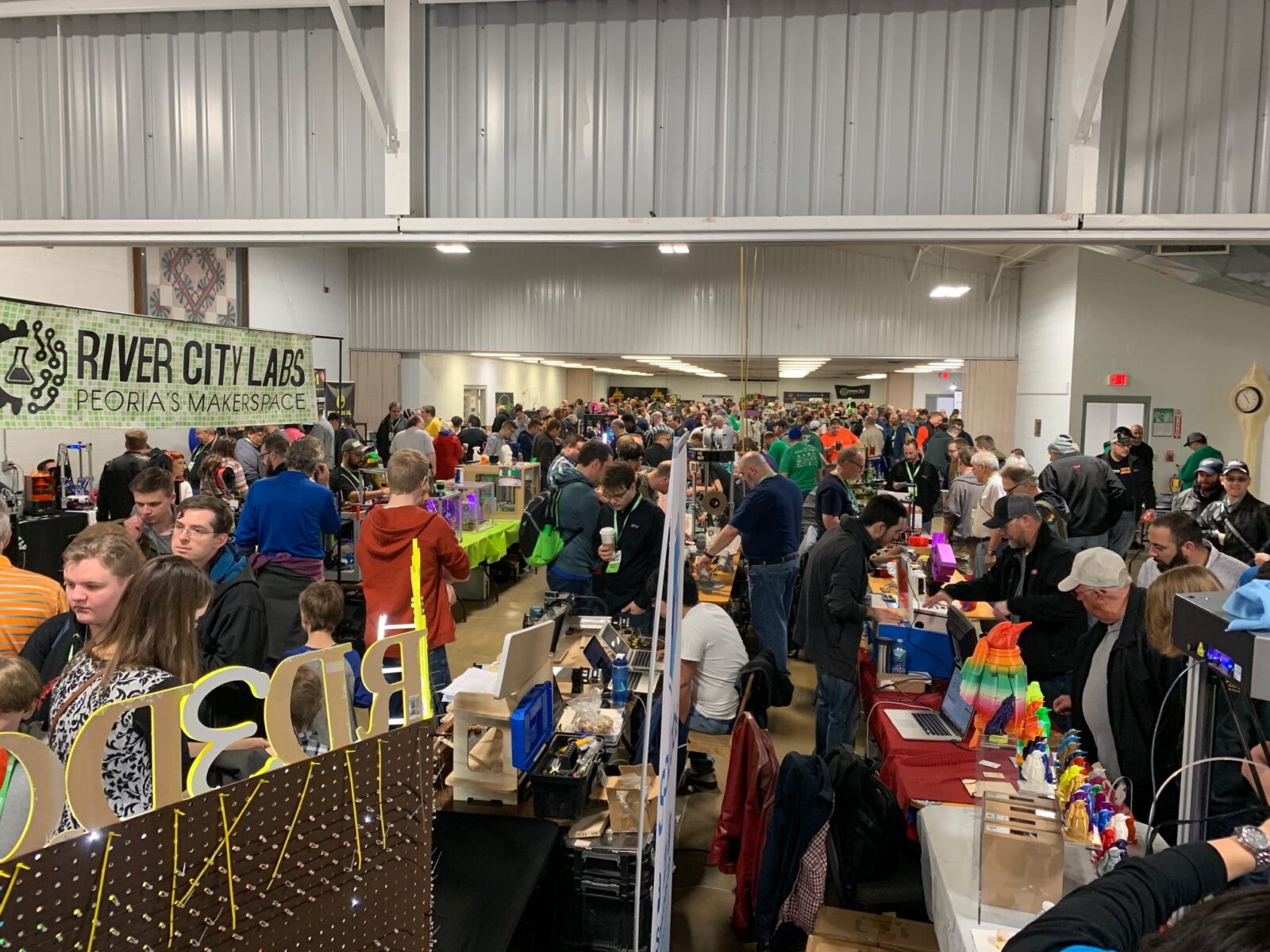Michael Hackney (my publisher) and I went to Midwest RepRap Fest this year, and it was an absolute blast. We each brought a printer to show off, talked shop with the coolest nerds in the world until our voices cracked, and sold a pile of books.
I have to say that I really appreciated seeing people get excited that 3D Printer Engineering Volume 1 was an actual physical thing they could buy. Nobody went to MRRF looking to buy dead-tree books, but hundreds of people thumbed through it, and we sold all the copies we brought.
MRRF is growing every year and this time around it had clearly outgrown the space in two smaller buildings at the fairgrounds in Goshen, IN. Navigating the halls was difficult. Next year will be in a much bigger building, and I suspect we’ll still manage to nearly fill it.
A lot of people commented on the significant number of toolchangers and other multi-material printing options like Mosaic Palettes and Prusa MMUs at MRRF this year. Multi-color, multi-material printers are clearly the “new hotness” and where a lot of the horsepower is going in open source 3DP development these days. And yet, there were also a ton of Ender 3 printers (a popular low-cost value model) and of course table after table of unique custom printer builds. And it got me thinking about the shape of the 3D printer market. Things have changed a lot in the past few years.
I wouldn’t be the first person to comment on how the middle has largely hollowed out of the 3D printing market, bifurcating it largely into low cost printers ($180-350 or so) and high cost printers ($thousands) and not a lot of commercial products in between. It seems like most of the mid-range vendors (aside from Prusa) are either being driven upmarket or being driven out of business by cheap Chinese competition. A few really compelling “value” models like the Ender 3 and CR-10 were released in the last few years — both new i3-type designs made for unit cost optimization rather than knock-off clones of more expensive products — and it has totally changed the 3D printing commercial ecosystem and userbase. I’m guessing we pick up a million new printer-users per year now.
And those users by and large are not visiting the old early-adopter hangouts like Google Groups and RepRap Forums. They’re watching YouTube videos and posting memes on Facebook. They’re printing stuff more than building printers. It’s a big change from the old crowd of tech-geeks and 3D printing enthusiasts, the people like me who have 3D printing as a hobby in itself. The printer is becoming normalized as a tool to do cool stuff, rather than an end in itself.
All that’s fine, and good, and lots of other people have already commented on it recently. What struck me though was the complete absence of something we used to have too much of: rivalry between different camps of printer users. There was no Makerbot-hating at MRRF, no holy war over Bowden vs Direct extruders, no arguing over whether Ultimaker-style cross gantries or CoreXY gantries are superior, no trash-talking Mendel/i3 moving bed printers, and so on. That used to be a HUGE part of the 3D printing hobbyist world. We all had really strong opinions about what type of printer was best. I heard a lot of friendly questions about “why’d you do it that way?” but not the slightest hint of “this way is best.”
What I concluded at MRRF was that the community has simply grown and developed to the point where an implicit understanding arose that we can have different printers for different things. There’s no point in rivalry between an Ender 3 and an E3D CoreXY Toolchanger because they fill different market niches. There’s no point in arguing between Deltas and CoreXY because they’re both good and can peacefully coexist. There’s no point in arguing between all-metal structures and all-printed RepRaps because they’re built for different reasons. And so on.
This development really means “3D printing” is no longer a monolithic activity where the objective is climbing a single mountain trail from “it doesn’t print” to “it prints” to “it prints better.” There are a lot of paths through the landscape now. I think there was a kind of unspoken camaraderie at MRRF, a change in the zeitgeist perhaps, that everyone there was walking in the same woods… for different reasons, on different paths, at different speeds. But definitely the same woods.
